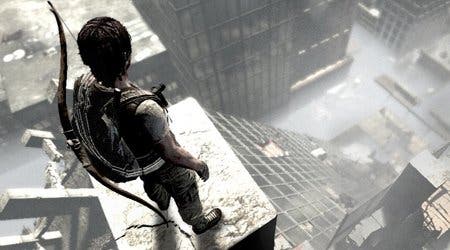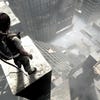I Am Alive Preview
Dead or alive?
After three years of silence, I Am Alive feels as much a statement as a title. The tale behind its development threatens to overshadow the game itself, and it's as packed with enigmas, dead-ends and abandoned ruins as the story that's within.
French outfit Darkworks, creator of Cold Fear, Alone in the Dark: The New Nightmare and other anonymous classics, were the team originally in charge when the CG trailer first emerged, though there's doubt that the game ever got beyond the concept phase - and whatever the case, when the project limped towards Ubisoft Shanghai some two years later, work was started anew.
The loose post-apocalyptic premise set out by the original trailer remains, though it's now been bent to Ubisoft Shanghai's own ends. Twelve months on from an inexplicable and unexplained catastrophe known only as The Event, the world has collapsed into rubble and dust. Our unnamed hero finds himself at the end of a yearlong trek across the width of the country to his hometown of Haverton, in pursuit of the wife and child he still optimistically believes are alive somewhere in the chaos.
It's a glib yet somewhat believable world that I Am Alive inhabits, and tonally it strives to conjure Cormac McCarthy's The Road rather than any of the more gauche dystopias that inform other digital apocalypses. The environment is oppressively grey, but it's an enforced monochrome aesthetic that's not without its own little muted beauty.
Stark white light beams peek through dark steel girders, and a thick layer of dust sits atop everything. The twisted metal and tumbled concrete makes for a strangely coherent architecture, and combined with its bleached lighting it's a setting that's more reminiscent of the otherworldliness of Ico's castle than Fallout's Wastelands, with a tangible melancholy hanging in the air.
There's a debt to Team Ico's second game in its traversal too, though I Am Alive is smart enough to build upon the mechanics introduced by Shadow of the Colossus. Scaling the environment depletes a stamina gauge, with long leaps biting out a bigger chunk still. When it's running dry you'll have to rapidly tap the right trigger in a desperate attempt to cling on.
The urgency with which I Am Alive's stamina bar shrinks introduces a strategic layer to its traversal - getting from point to point becomes a game of careful planning and resource management, seeking out ledges to stand upon and recoup some energy. Climbing pitons form part of your arsenal, allowing you to create small safe-holds to punctuate the energy-sapping escapades across building facades. You're as nimble as Nathan Drake when on the move, but such restrictions mean you're more human too.
It's a novel way to tear the traversal away from rails, and with the number of pitons limited the survival horror staple of inventory management has been neatly worked in. There's a welcome freedom here as well, with branching paths when scaling buildings ensuring there's an element of exploration that's absent in other like-minded games.
Elsewhere, the survival horror influence is more explicit, though it's often subverted just as smartly. A thick dust shrouds certain parts of Haverton, sipping away at your stamina while diminishing visibility, leading you to rely on your map to navigate. Sometimes the only escape is heading upwards, scaling a nearby building you rising you up and out of the dense yellow fug.
And like the survival horror games of old the combat is satisfyingly restrained, as an encounter in Haverton's subway attests. Three thugs prowl the ticket hall, holding you up as you try to enter. A stick-up situation quickly evolves as you turn your gun on the hostile group, forcing one to cower away while the others threaten to turn on you should you pull the trigger.
With only a single bullet in the chamber it's a tricky puzzle with a range of solutions. The most effective sees a shot fired into the belly of the thug, which sends one of his cohorts fleeing into the tunnels while the other cowers in deferral, allowing himself to be easily neutralized with a blow to the skull.
Bullets have to count, and a later, more combat-focused level shows this in effect once more. Again it's a case of solving the problem of how best to distribute scarce ammo between a room of thugs - think of it as a particularly gruesome Layton puzzle - though this time the opposition is armed. A handful of retries reveals a pleasing emergence to the combat; enemies can be disarmed, and getting up close with a machete triggers off a brief QTE-fuelled struggle, the different elements coming together to provide a variety of outcomes and approaches.
It's not yet clear how the balance between the more solitary traversal and the bustle of combat will play out, although the hostile pockets of enemies seem to be the exception rather than the norm. These flashes of savagery in an otherwise barren landscape show The Road's influence, and it also shares an understated sense of horror with McCarthy's book. Deeper into the subway tunnels there's a couple of people sitting over a makeshift fire, offering hospitality, food and a rare slice of human warmth - though a line of blood from the impromptu barbecue reveals a slaughter pen full of people, blithely revealing the source of the meat.
A lightly gruesome touch in a game that looks set to rise above its tortured development. Though it's not quite as original as its developers would have you believe - there's an unspoken debt to Irem's sadly departed Zettai Zetsumei Toshi series - I Am Alive's been worked into a cohesive little game that's riddled with smart ideas. Be thankful that this one didn't kick the bucket.




.png?width=291&height=164&fit=crop&quality=80&format=jpg&auto=webp)




.jpg?width=291&height=164&fit=crop&quality=80&format=jpg&auto=webp)
